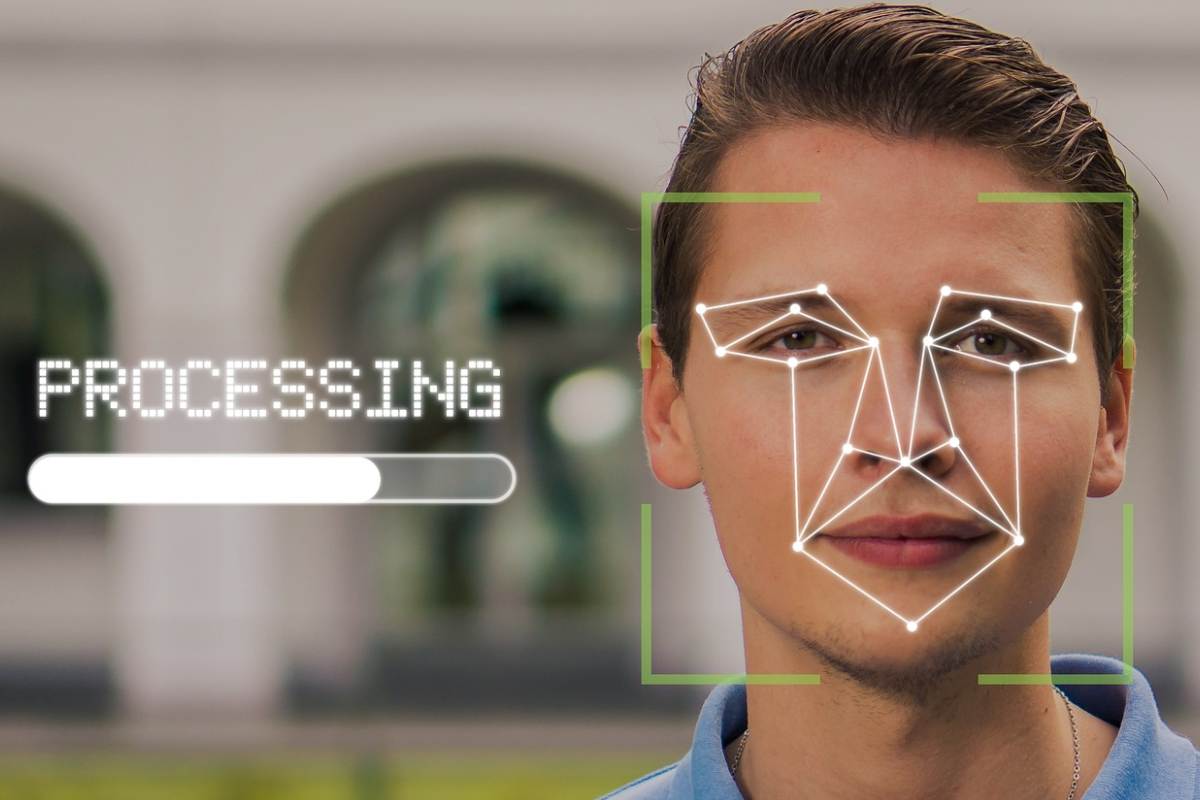
Introduction
Facial recognition powered by artificial intelligence (AI) is changing how security and surveillance are managed across the globe. According to Fortune Business Insights, the global facial recognition market was valued at $7.73 billion in 2024 and is expected to reach $8.83 billion in 2025. This figure is projected to grow to $24.28 billion by 2032, with a compound annual growth rate (CAGR) of 15.5%. In real-world applications, London’s police department reported apprehending over 500 suspects in 2024 alone using facial recognition technology, highlighting its growing role in crime prevention.
Given this rapid development, this article explores how AI facial recognition is shaping modern surveillance. It will examine how the technology works, where it is being used, its role in enhancing public and private security systems, its ethical challenges, and what the future holds. We will also look at how technologies such as the ai security camera are redefining the standard for proactive security.

How AI Powers Facial Recognition Systems
To begin with, AI significantly improves the efficiency of facial recognition systems. Machine learning algorithms, especially deep learning, enable computers to process facial data with remarkable accuracy. These algorithms analyze specific facial landmarks—like the distance between the eyes or the shape of the jawline—to identify individuals.
As these systems continue to be trained on larger datasets, their accuracy improves. In fact, recent models have reached over 99.97% accuracy in ideal conditions. This precision helps distinguish between thousands of individuals in a crowd or even match faces captured in poor lighting or unconventional angles.
Consequently, these AI models are integrated into surveillance networks to enable real-time face matching, anomaly detection, and alert generation. This makes them highly effective for continuous monitoring in high-traffic or sensitive environments.
Real-World Applications of AI Facial Recognition
Following the technological advancements, facial recognition systems are now widely deployed across multiple sectors. Law enforcement agencies use them for identifying suspects, verifying identities, and analyzing video footage during investigations. These systems can automatically scan through hours of video data and extract relevant frames, saving time and manpower.
Moreover, airports around the world are using facial recognition for immigration and boarding. As of 2023, nearly 97% of global airports have implemented this technology in some capacity. Retailers, banks, and even stadiums are using it for access control, fraud prevention, and customer behavior analysis.
Therefore, AI facial recognition has become more than just a surveillance tool—it’s a strategic asset for improving security, efficiency, and user experience.
Advantages of AI-Powered Surveillance
Simultaneously, AI facial recognition enhances surveillance by adding layers of intelligence to the monitoring process. Unlike traditional CCTV systems that simply record footage, AI systems can interpret, analyze, and act on visual data in real time.
One of the primary benefits is speed. AI can process multiple video streams simultaneously and identify threats faster than human operators. Furthermore, facial recognition integrated with behavior analysis helps detect suspicious activity, such as loitering or unauthorized entry, before it escalates.
In addition, AI systems reduce the number of false alarms. By distinguishing between humans, animals, and environmental triggers like swaying trees or shadows, the technology eliminates irrelevant alerts and helps focus security resources more effectively.
The Rise of the AI Security Camera
Building on these capabilities, the ai security camera has emerged as a cornerstone of intelligent surveillance. These cameras go beyond simple recording—they detect and analyze movement, identify individuals, and trigger alerts autonomously.
For example, in commercial environments such as warehouses, schools, and healthcare facilities, AI security cameras help detect unauthorized access, identify missing objects, and even count people entering or exiting an area. Their use of real-time analytics allows them to detect threats before they materialize, making security proactive rather than reactive.
According to industry insights, AI cameras can reduce false alarms by up to 90% and speed up incident investigations by over 50%. This makes them a powerful tool for businesses and institutions that require both efficiency and reliability in their security systems.
Features That Enhance Surveillance Efficiency
As AI continues to evolve, security cameras are now equipped with advanced features that significantly improve their effectiveness. Among the most impactful features are:
- Facial Recognition: Cameras map facial features to stored profiles, enabling access control and identification of persons of interest.
- License Plate Recognition (LPR): These systems log vehicle entries and exits automatically, useful for gated communities, parking lots, and logistics hubs.
- Behavior Analysis: AI cameras monitor behaviors like loitering or running to detect potential threats in advance.
- Real-Time Alerts: These systems can automatically notify security personnel or trigger alarms when they detect anomalies.
- AI-Powered Search: Users can search surveillance footage using natural language queries like “person in red shirt near main entrance,” drastically reducing the time needed to review video.
These features create a smarter, more efficient security infrastructure that minimizes manual effort and enhances threat detection.
Ethical and Legal Challenges
Despite the benefits, AI facial recognition technology presents significant ethical and legal challenges. Many privacy advocates argue that continuous facial tracking can lead to intrusive surveillance and erode civil liberties.
To address this, several jurisdictions have introduced legislation to limit or regulate facial recognition use. As of 2024, 15 U.S. states have placed restrictions on how law enforcement agencies can use this technology. The European Union has also proposed AI regulations that emphasize transparency, accountability, and strict usage conditions for biometric surveillance.
Furthermore, issues around data bias persist. Facial recognition systems trained on non-diverse datasets may perform poorly across different demographics, potentially leading to false positives or negatives. These issues call for stricter standards and better training data to ensure fairness and accuracy.
Implementation in Public and Private Sectors
From a deployment perspective, both public and private sectors are actively investing in AI surveillance systems. In cities, AI-powered cameras are mounted on traffic lights, public transport, and government buildings to monitor safety. Meanwhile, private businesses use them to secure their premises, enforce compliance, and manage risk.
In educational institutions, AI systems help monitor campus security, automate attendance, and detect unauthorized visitors. Healthcare facilities use them to restrict access to sensitive areas and track patient movements for safety.
This wide adoption across sectors showcases the flexibility and scalability of AI surveillance solutions, especially when enhanced with facial recognition capabilities.
Future Trends in AI Surveillance
Looking ahead, the integration of facial recognition and AI in surveillance systems is expected to accelerate. Advancements in edge computing will allow cameras to process data locally, reducing latency and enhancing performance. Additionally, AI models are becoming more efficient, requiring less power and hardware to operate effectively.
There is also a growing emphasis on explainability—making AI systems more transparent in how they make decisions. This is particularly important for compliance and public trust, especially when surveillance is tied to law enforcement or government applications.
Furthermore, the market is shifting toward cloud-based video management platforms, allowing centralized monitoring of multiple locations and seamless updates of AI algorithms. This trend is set to continue, making AI-powered surveillance more accessible and manageable.
FAQs
What is AI facial recognition?
AI facial recognition is a technology that uses machine learning algorithms to detect and identify human faces from images or video streams. It compares facial features to stored data to verify or recognize individuals.
Where is AI facial recognition commonly used?
It is widely used in law enforcement, airport security, retail, education, healthcare, and private business for purposes such as access control, crowd monitoring, and fraud detection.
How accurate is facial recognition technology?
In optimal conditions, AI facial recognition can achieve accuracy rates above 99.9%. However, accuracy can vary depending on lighting, image quality, and dataset diversity.
What is an AI security camera?
An ai security camera combines traditional video surveillance with AI capabilities like facial recognition, behavior analysis, and real-time alerting. These cameras can process footage autonomously and improve response times while reducing false alarms.
Are there regulations around facial recognition technology?
Yes. As of 2024, at least 15 U.S. states have enacted laws regulating its use. The EU and other global bodies are also developing frameworks to ensure ethical and privacy-conscious implementation.
Conclusion
In conclusion, AI facial recognition is transforming surveillance from passive observation to intelligent, responsive security systems. With the ability to process, analyze, and respond in real time, it offers substantial improvements in safety, efficiency, and control.
The integration of the ai security camera into public and private infrastructures further enhances surveillance capabilities. As this technology becomes more prevalent, it is essential to prioritize ethical standards, transparency, and fairness to protect individual rights.
AI facial recognition is not just a technological advancement—it is a shift in how security is conceptualized and executed in the modern world. Its continued growth depends on responsible adoption, regulatory alignment, and ongoing innovation.
Key Takeaways
- AI facial recognition uses machine learning to identify individuals with high accuracy.
- The technology is deployed across airports, law enforcement, retail, healthcare, and education.
- AI surveillance enables proactive security through features like real-time alerts and behavior detection.
- The ai security camera is a powerful tool that reduces false alarms and enhances situational awareness.
- Ethical and privacy concerns require clear regulations and transparent system designs.
- The market for AI-powered facial recognition is growing rapidly, with significant advancements expected in coming years.
Also Read: Experience Seamless Entertainment with the All in One Vidmate App
